Influencer marketing isn’t new, but for fashion brands, it’s never been more relevant. The problem? It’s also never been more crowded, confusing, or easy to mess up.
Maybe you’ve tried gifting products and gotten a few pretty posts that didn’t lead to sales. Maybe you’ve worked with creators who looked perfect on paper, but the results? Meh. Or maybe you’re just now considering influencer marketing, but the whole thing feels like a guessing game.
This guide is here to fix that. By the end, I’ll make sure you’ll be able to:
- Apply proven influencer marketing strategies that actually drive growth
- Use the right tools to find and manage the best creators
- Use our ready-to-go brief template to set your campaigns up for success
- Track influencer performance and clearly prove ROI to your team or clients
Let’s get into it.
Why Influencer Marketing Still Works (Especially for Fashion)
If you only look at vanity metrics (likes, views, followers) it’s easy to think influencer marketing is losing its punch. But smart fashion brands know: the real value isn’t just in reach. It’s in influence.
And fashion is one of the few industries where influencer marketing is effective and essential.
Here’s why:
- Fashion is visual by nature. Whether it’s a Reels styling video, an unboxing on TikTok, or a casual OOTD post, your products need to be seen on real people in real life to drive desire. Influencers create that visual proof faster and more authentically than any ad ever could.
- The path to purchase has changed. People discover brands on social media, not just through search engines, ads or conversational AI tools (ChatGPT, Google’s Gemini, etc). A well-timed post from the right creator can turn cold audiences into curious browsers, and curious browsers into customers.
- UGC is gold for your marketing flywheel. Influencer content doesn’t just sell once. It becomes the raw material for ads, emails, website assets, and organic social, multiplying your investment across channels.
- Creator trust still beats brand ads. A genuine recommendation from a creator with a loyal audience carries 10x more weight than even the best-designed brand campaign. People are wired to trust other people, not logos.
Before You Start: What You Should Have in Place for a Fashion Influencer Campaign
Before you start reaching out to creators or sending out product samples, make sure your brand is actually ready to run an influencer campaign. Without these basics covered, even the best influencer won’t be able to save a shaky setup.
Here’s what you need dialed in:
1. A Clear Brand Identity
Influencers can only amplify what you already have. If your brand’s aesthetic, tone, or target audience is fuzzy, creators won’t know how to represent you, or worse, they’ll guess wrong.
Make sure you have:
- A visual style (even a simple moodboard helps)
- Key brand messages (what you stand for, what you offer)
- Defined target customer profiles
2. Professional-Looking Social Media Pages
When influencers tag your brand, potential customers will click over to your Instagram (or TikTok) to check you out. If they land on a page with 10 followers and no recent posts, it raises red flags.
To build trust:
- Post consistently (even if it’s just a few times a week)
- Focus on quality visuals that match your brand vibe
- Engage with your community: comments, DMs, shares
If you’re just getting started, growing your Instagram page can feel slow. But you don’t need to buy fake followers or pour thousands into ads.
Flico helps you grow your Instagram organically by getting your brand in front of the right people.
It uses AI to find real users based on interests, behavior, and account activity, then engages with them through likes, follows, and profile visits to bring attention to your page.
No bots, no fake accounts. Just real people who are likely to care about your brand.
So when a potential customer checks your page after seeing an influencer’s post, they find an active, authentic community, and trust you enough to stick around.
3. A Shoppable Experience
Influencer marketing builds interest, but if your store can’t close the deal, you’ll lose momentum fast.
At a minimum, you need:
- A mobile-optimized website
- Fast loading times
- Easy checkout process
- Clear product descriptions and sizing info
Fashion Influencer Marketing Strategies That Actually Work
If you’re planning to invest time and budget into influencer marketing, you need a real strategy behind it. Random shoutouts and one-off posts aren’t enough, especially in fashion, where customers are constantly being bombarded with new brands.
The good news is you don’t have to reinvent the wheel. Some influencer strategies work again and again because they tap into how people actually shop for clothes, through inspiration, storytelling, and seeing products styled in real life.
These are the strategies that not only get attention but also build real interest, loyalty, and sales over time:
- Show How Your Brand Fits Into Real Life
When it comes to fashion, the best influencer content shows how pieces fit into real, everyday life. Styling challenges, GRWM videos, and casual storytimes are some of the most effective formats for making that happen.
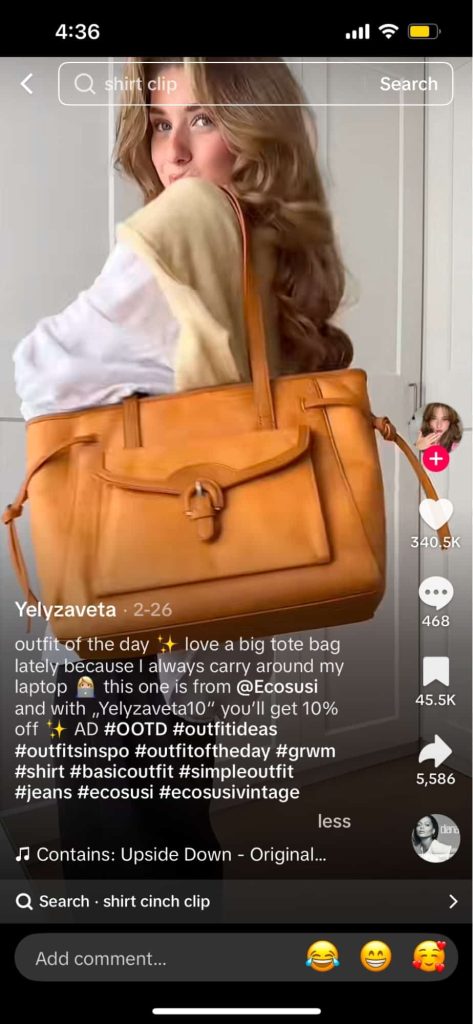
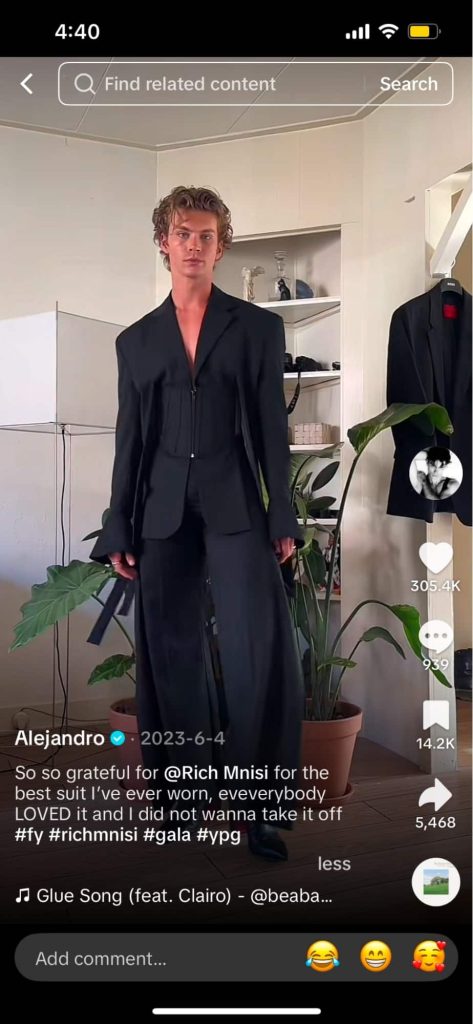
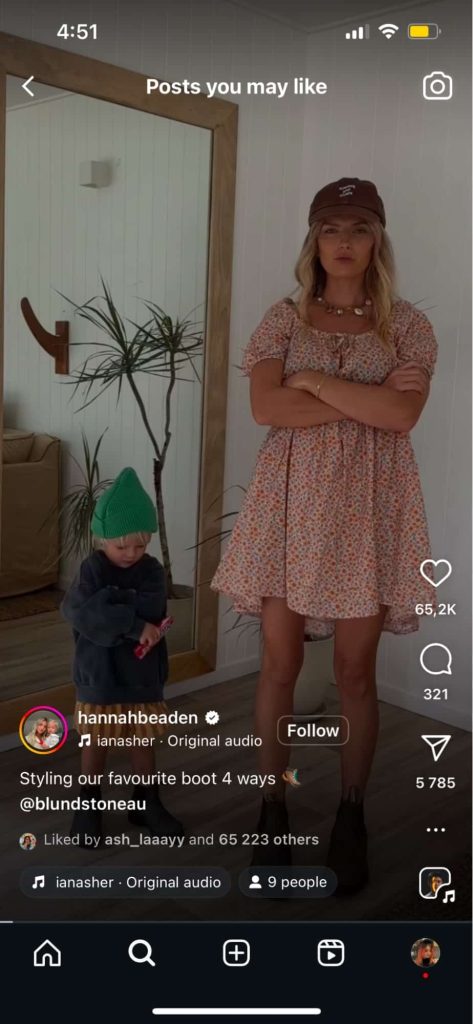
Instead of one polished photo, you get a series of moments where your product shows up naturally, like “7 Days, 7 Outfits,” “How to Style One Jacket Five Ways,” or a GRWM video where an outfit gets put together piece by piece. Storytimes take it even further by connecting your products to real experiences, making them feel personal and memorable.
This kind of content doesn’t just show what your brand looks like, it shows how it lives. And that makes customers much more likely to see your pieces as part of their own daily routines.
- Partner with Micro-Influencers for Deeper Impact
In fashion, working with micro-influencers often drives better results than chasing big names. These creators, typically with a few thousand to around 100K followers, build tight-knit communities where their style choices feel personal, not promotional.
I’ve seen campaigns where one micro-influencer outperformed five macro ones combined, and not just in conversions, but in comment quality and brand love. That’s when I stopped chasing follower counts and started chasing fit.
When a micro-influencer recommends your jacket or bag, it comes across like a trusted tip from a friend. Their audiences notice the details, ask questions, and take action, and that trust translates into higher engagement and stronger conversions.
They’re also budget-friendly. For the cost of one major influencer, you can work with several micro-creators, each reaching different pockets of your target audience with authentic, varied content.
The key is alignment.
Partner with influencers whose style and values naturally fit your brand. Authenticity is what makes customers want to buy into your world.
- Prioritize UGC-Driven Campaigns
When it comes to fashion marketing, user-generated content (UGC) is one of the most valuable assets you can create. It’s about capturing content that looks and feels real enough to stop someone mid-scroll.
Instead of treating influencer posts as one-and-done promotions, think about how you can turn every collaboration into a source of reusable content. Outfit shots, styling videos, unboxings, casual mirror selfies, these pieces perform across your ads, email campaigns, product pages, and social media.
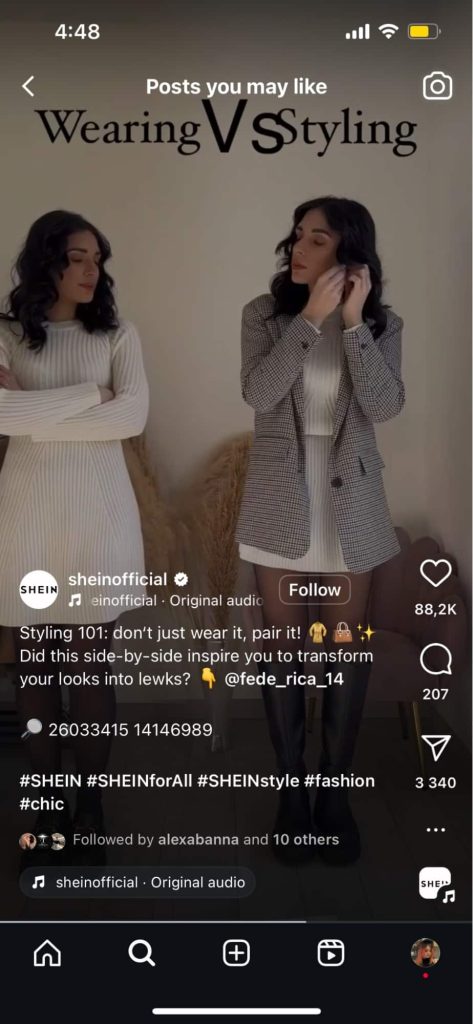
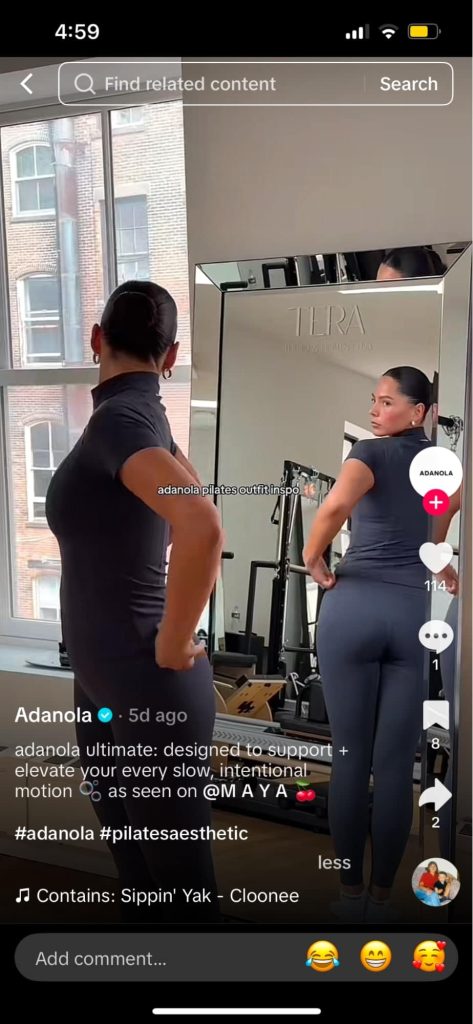
The best part? UGC builds trust faster than polished brand shoots.
When customers see real people styling your pieces in ways that feel natural, it becomes easier for them to imagine themselves wearing your brand too.
Plan campaigns with UGC in mind from the start, and you’ll walk away with assets that work overtime.
- Use Result-Based Compensation Models
One smart way to make influencer budgets work harder is by shifting to performance-based compensation, specifically affiliate marketing and CPM (Cost Per Mille) deals.
With affiliate marketing, influencers earn a commission for every sale they drive through a tracked link or code. It’s a low-risk way to scale because you only pay for actual results. You can also pair commissions with smaller flat fees, using them as a negotiation tool to lower upfront costs while keeping influencers motivated.
CPM models let you pay based on impressions, making them ideal for brand awareness campaigns. You can cap the number of paid views, so even if a post goes viral, your costs stay under control.
Both models align incentives between your brand and the influencer, making collaborations feel more like partnerships than one-off transactions, and making it easier to track ROI from the start.
- Tap Into Fashion Trends and Viral Aesthetics
Fashion moves fast, and so do the trends that drive it.
If you want your influencer campaigns to feel fresh (and get more organic reach), tapping into current aesthetics is a must.
Think about viral styles like “quiet luxury,” “coquette core,” “clean girl,” or “old money” looks. Partnering with influencers to style your pieces within these trends helps your brand stay relevant and puts your products in the middle of conversations your audience is already having.
The key is subtlety.
You don’t have to change your entire brand to fit every trend. Instead, position your existing pieces to naturally align with what’s trending, whether it’s through styling choices, captions, or video formats like GRWMs and outfit transitions.
The earlier you catch a trend, the better the organic momentum you’ll build. And when the content feels timely without looking forced, it’s way more likely to convert.
How to Plan and Run a Fashion Influencer Campaign (with Tools and Templates That Make It Easier)
A great strategy means nothing if the execution is messy.
Finding the right creators, managing outreach, and tracking results properly can be the difference between a campaign that drives real growth and one that quietly flops.
You don’t need fancy tools or a big team to do it well.
Here’s a simple breakdown of the key steps and a few tools that make each part easier:
- Research and Find the Right Influencers
Choosing the right influencer is about finding real alignment, not just big numbers.
Start by defining your goals. If you’re aiming for brand awareness, larger creators on TikTok or Instagram Reels can boost visibility fast. If your focus is driving sales or building a loyal customer base, micro-influencers with niche, engaged followings are usually more effective.
Platform fit matters too.
Short-form video works best for trend-driven or everyday fashion. YouTube is stronger if you want deeper styling guides or haul-style reviews.
Their style and vibe need to match your brand.
If their aesthetic, tone, or lifestyle doesn’t feel like a natural fit, no amount of reach will fix it. You want customers to see their content and think, “Of course they’d wear that.”
Always review past brand collaborations carefully:
- Did their sponsored posts feel genuine or scripted?
- Do they jump from brand to brand without real loyalty?
- Does their audience engage thoughtfully, or just scroll past?
Check their demographics too.
Age, location, and gender split should align with your ideal customer profile.
Tools like IQdata, Modash, and Grin make it faster to pull audience analytics, engagement rates, past collabs, and spot fake followers.
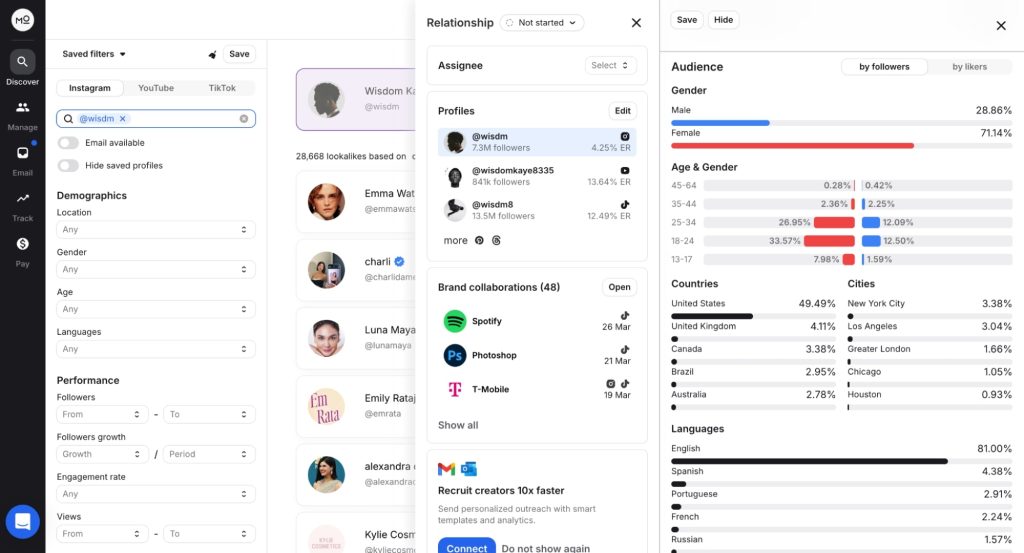
If you’re vetting manually, set up a clean spreadsheet to track key points: audience match, vibe fit, engagement quality, brand alignment.
Choosing the right creators from the start makes every other step (briefing, outreach, content creation) easier and more effective.
- Organize Smart Outreach
Finding the right influencers is only half the battle. Getting them to say yes and actually be excited to work with you comes down to smart, personal outreach.
Start early.
Reach out at least 1–2 months before your planned campaign launch to allow time for negotiations, content creation, and any scheduling surprises. The best collaborations are rarely last-minute.
Personalize every message.
Mention their name, reference something specific about them, and explain why your brand is a natural fit. Focus on what’s in it for them: early access, affiliate commissions, paid opportunities, or exclusive collaborations.
Some of the most successful influencers I’ve worked with said yes not because the brand was huge, but because the message felt like a real conversation.
I’ve A/B tested outreach lines, subject lines, even the timing, and what consistently gets replies is a short, direct pitch that proves you’ve actually seen their content and thought about how they fit.
Your message should quickly cover:
- Who you are
- Why you’re reaching out
- What’s in it for them
- How you want to collaborate
- The next step (“Can I send you a sample?” or “What are your rates?”)
Tools like Streak, Mailshake and Instantly can help you manage outreach at scale without losing the human touch.
Use smart follow-ups too.
Send 2–3 friendly nudges if you don’t hear back, each adding new value rather than just asking if they saw your last email.
Real partnerships start with good first impressions. Make yours count.
- Build a Strong, Creator-Friendly Brief
Your brief sets the tone for the entire collaboration.
It should give influencers enough direction to align with your brand, but enough freedom to create content that feels authentic to their audience.
Focus on keeping it simple:
Explain who you are, what you’re promoting, the style you’re aiming for, and what you expect in terms of content and deadlines.
Be clear about what’s non-negotiable (like tagging your brand or showing the product clearly) and what’s flexible (like caption style or video format).
You don’t need a complex system to do this. A clean document in Google Docs or Notion is more than enough.
If you want a shortcut, I’m sharing the exact influencer brief template I’ve refined over the years, after too many missed deadlines and content that didn’t match the vibe. You can grab it here.
- Set Up a Tracking System That Actually Works
Once collaborations start rolling out, you need a clear way to track what’s happening, otherwise you’re guessing at results.
You don’t need expensive software.
Set up a clean tracking sheet in Google Sheets or Airtable, and use tools like Bitly or UTM.io to create unique links for each influencer.
If you’re using Shopify or a similar platform, set up simple conversion tracking through built-in analytics or Google Analytics.
Keeping everything organized makes it easy to report results, double down on what’s working, and catch problems early.
Good tracking doesn’t just prove ROI. It makes your next campaign even smarter.
What Metrics to Track
Group your tracking around what actually matters for your campaign, not just numbers for the sake of numbers.
Reach and Engagement
- Views (Reels, TikToks, Stories)
- Engagement (likes, comments, shares, saves)
- Engagement rate (engagement divided by audience size)
Traffic and Sales
- Traffic to your website (from tracked influencer links)
- Traffic to your social pages (profile visits, follows)
- Tracked conversions (purchases through unique links)
- Promo code uses
- Conversion rate (purchases divided by total visitors)
- ROI (revenue vs. cost of the collaboration)
Brand Awareness
- Follower growth on your brand’s social accounts
- Organic brand mentions (tagged posts, Stories)
- Branded search volume increases (more people searching your brand name)
Qualitative Insights
- Audience sentiment (Are comments positive? Are people excited, curious, or sharing?)
- Conversation quality (Are people asking real questions or tagging friends?)
- Overall brand perception (Are you being associated with the style/image you want?)
You don’t need to obsess over every number.
Pick the metrics that match your campaign goal (awareness, engagement, conversions) and track them consistently.
- Plan for Content Repurposing
Influencer content shouldn’t just live and die on their feed. If you’re not repurposing it across your marketing channels, you’re leaving serious value on the table.
Start by saving every piece of content you’re allowed to reuse, especially top-performing posts, videos, and Stories.
Keep them organized in folders by influencer name, date, and usage rights (organic only vs. paid ads approved).
Here’s where you can repurpose influencer content:
- Social Media: Repost to your own Instagram, TikTok, Pinterest, or Facebook feeds.
- Paid Ads: Use strong UGC in retargeting ads, brand awareness campaigns, or seasonal promotions (if rights allow).
- Product Pages: Add authentic photos and videos to your ecommerce site to build trust and boost conversions.
- Email Marketing: Showcase influencer quotes, outfit shots, or styling videos inside your newsletters.
- Pitch Decks or Lookbooks: Feature real-world usage to build brand credibility with buyers or investors.
Tools like Google Drive, Dropbox, or Airtable make it easy to manage your content library across campaigns.
Repurposing doesn’t just stretch your budget, it multiplies the impact of every collaboration.
Conclusion
Influencer marketing for fashion brands works when you approach it with real strategy, not wishful thinking.
It’s finding the right creators, setting them up for success, tracking what matters, and turning every collaboration into a tool for growth.
The brands that win aren’t the loudest or the biggest. They’re the ones who plan sharper, execute cleaner, and build influence that lasts.
With the strategies, tools, and templates you have now, you’re ready to stop guessing and start running influencer campaigns that actually move the needle.
Start small. Stay consistent. Keep building.






